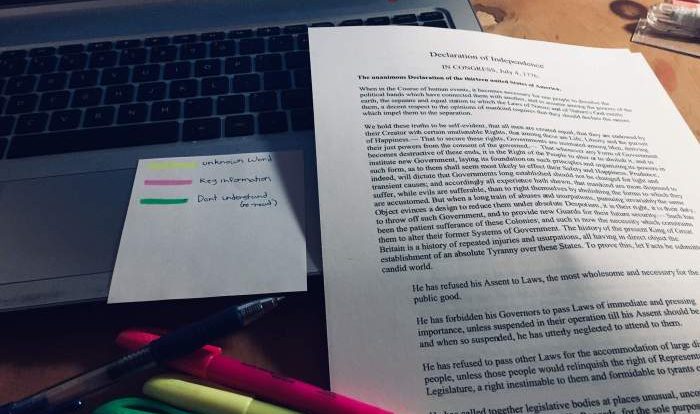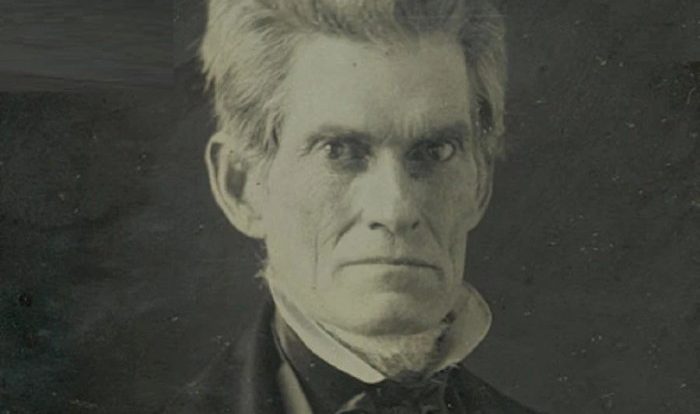Chapter 27 American Pageant Notes unveils a captivating narrative that transports readers to a pivotal juncture in American history. This comprehensive guide delves into the intricate tapestry of social, cultural, political, and economic transformations that shaped the nation’s destiny.
As we embark on this historical journey, we’ll encounter iconic figures, witness transformative events, and explore the profound impact of foreign policy on America’s global standing.
Historical Context
Chapter 27 of the American Pageant textbook explores the period from 1877 to 1912, a time of significant social, economic, and political change in the United States. This era witnessed the rise of industrialization, urbanization, and immigration, as well as the emergence of new social and political movements.
Political Influences
The political landscape of the late 19th century was dominated by the Republican Party, which controlled the presidency for most of the period. The Republicans supported a pro-business agenda, including high tariffs and a limited role for government in the economy.
However, the Democratic Party, which represented the interests of farmers and laborers, began to gain strength in the late 1800s.
- Republican dominance: The Republican Party’s pro-business policies favored industrialists and wealthy Americans.
- Rise of the Democratic Party: The Democratic Party gained support from farmers and laborers who felt left behind by the Republicans’ economic policies.
- Political corruption: Corruption and political machines became widespread during this period, leading to a decline in public trust in government.
Key Themes and Concepts
Chapter 27 of the American Pageant textbook delves into the central themes and concepts that shaped the United States during the period from 1877 to 1912. These themes explore the social, economic, and political transformations that characterized the Gilded Age and Progressive Era.
One key theme is the tension between economic growth and social inequality. The chapter examines the rapid industrialization and urbanization that occurred during this period, which led to the emergence of powerful corporations and a widening gap between the wealthy and the poor.
This tension is exemplified by the rise of labor unions and the growing demand for social reforms.
Industrialization and Economic Growth
The chapter highlights the significant industrial growth experienced during the Gilded Age. The development of new technologies, such as the Bessemer process and the telegraph, led to increased productivity and the expansion of industries like steel, railroads, and oil. This economic growth fueled the rise of large corporations and the concentration of wealth in the hands of a few individuals.
Social Inequality and Labor Unrest
Alongside economic growth, the Gilded Age witnessed a sharp increase in social inequality. The gap between the wealthy elite and the working class widened as industrialists amassed vast fortunes while many workers faced low wages, long hours, and dangerous working conditions.
This inequality sparked labor unrest and the rise of labor unions, which sought to improve working conditions and protect workers’ rights.
Important Figures and Events
The key figures and events discussed in Chapter 27 of the American Pageant textbook significantly influenced the course of American history. Their actions and decisions shaped the nation’s political, social, and economic landscape, leaving a lasting impact on the country.
Political Figures
- Theodore Roosevelt:A dynamic and charismatic president, Roosevelt promoted progressive reforms, expanded the role of the federal government, and played a key role in foreign affairs, including the construction of the Panama Canal.
- William Howard Taft:Taft, Roosevelt’s successor, was a more conservative president who focused on antitrust enforcement and tariff reduction.
- Woodrow Wilson:Wilson, a progressive Democrat, implemented sweeping reforms in areas such as banking, labor, and tariffs. He also led the United States into World War I.
Other Key Figures
- Jane Addams:A social reformer and pacifist, Addams founded Hull House, a settlement house in Chicago that provided services to immigrants and the poor.
- Ida Tarbell:A muckraking journalist, Tarbell exposed the corrupt practices of Standard Oil, contributing to the growing public demand for antitrust legislation.
- Booker T. Washington:An African American educator and civil rights activist, Washington founded Tuskegee Institute and advocated for vocational training as a means of racial uplift.
Historical Events
- Progressive Era:The Progressive Era, from the late 19th to early 20th century, was a period of widespread social and political reform aimed at addressing the problems caused by industrialization and urbanization.
- World War I:The United States entered World War I in 1917, siding with the Allies against Germany and its allies. The war had a profound impact on the country, both domestically and internationally.
- New Deal:The New Deal, implemented by President Franklin D. Roosevelt in response to the Great Depression, was a series of economic programs designed to stimulate the economy and provide relief to the unemployed.
The figures and events discussed in this chapter played pivotal roles in shaping American history. Their contributions and actions had lasting consequences, continuing to influence the nation’s trajectory in the years to come.
Social and Cultural Changes
The historical period covered in Chapter 27 of the American Pageant textbook witnessed a multitude of social and cultural changes that profoundly influenced the lives of ordinary Americans. These transformations were driven by a complex interplay of factors, including industrialization, urbanization, and immigration, and had lasting effects on American society.
One of the most significant social changes was the rise of the middle class. As industrialization expanded economic opportunities, more and more Americans moved into white-collar professions and experienced an increase in their standard of living. This growing middle class became a driving force behind consumerism and the development of a mass culture that catered to their tastes.
Changing Gender Roles
Another major social change was the transformation of gender roles. Industrialization and urbanization created new opportunities for women outside the home, leading to a gradual shift away from traditional gender norms. Women began to enter the workforce in greater numbers and to pursue higher education, challenging the long-held belief that their place was solely in the domestic sphere.
Immigration and Nativism, Chapter 27 american pageant notes
The late 19th and early 20th centuries also saw a wave of immigration from Southern and Eastern Europe. These new arrivals brought with them their own cultures and traditions, which both enriched American society and fueled tensions between native-born Americans and immigrants.
Nativist sentiments grew, leading to restrictive immigration policies and discrimination against immigrants.
Urbanization and Social Problems
As cities grew rapidly, they faced a host of social problems, including overcrowding, poverty, and crime. The influx of immigrants and the lack of adequate housing and sanitation led to the development of slums and the spread of disease. These urban problems would continue to challenge American society well into the 20th century.
Political and Economic Developments
The political and economic landscape of the United States underwent significant transformations during the period covered in Chapter 27 of the American Pageant textbook. These developments played a pivotal role in shaping the nation’s destiny and had profound implications for the lives of Americans.
Politically, the emergence of a two-party system, with the Federalists and Democratic-Republicans as the dominant forces, marked a shift from the consensus-oriented politics of the early republic. This partisan divide led to intense debates over the proper role of government and the interpretation of the Constitution.
Economic Growth and Industrialization
Economically, the period witnessed a surge in economic growth fueled by the Industrial Revolution. The invention of new technologies, such as the cotton gin and the steam engine, transformed industries like agriculture and manufacturing. The growth of cities and the expansion of transportation networks further accelerated economic development.
Market Revolution
Accompanying the Industrial Revolution was the rise of the market economy, characterized by the increased production and exchange of goods and services through market mechanisms. This shift from a largely agrarian society to a more industrialized and market-oriented economy had a profound impact on American society and culture.
Impact on Americans
These political and economic developments had a multifaceted impact on the lives of Americans. The growth of the economy created new opportunities for wealth and upward mobility, but it also led to increased inequality and social tensions. The two-party system fostered political engagement and debate, but it also polarized society along ideological lines.
Overall, the political and economic developments of this period laid the foundation for the United States’ emergence as a major world power and set the stage for the challenges and opportunities that the nation would face in the centuries to come.
Foreign Policy and Diplomacy
The United States emerged as a global power during the period covered in Chapter 27 of the American Pageant textbook. Its foreign policy and diplomatic initiatives significantly shaped its role in world affairs.American foreign policy during this period was characterized by a combination of isolationism, interventionism, and expansionism.
The United States initially pursued a policy of isolationism, avoiding involvement in European affairs. However, it intervened in the Spanish-American War in 1898, acquiring overseas territories and becoming a colonial power. This marked a shift towards a more active role in world affairs.The
United States played a key role in the First World War, joining the Allies in 1917. President Woodrow Wilson’s Fourteen Points laid out a vision for a peaceful and democratic world order. However, the United States’ isolationist sentiments reasserted themselves after the war, and it did not join the League of Nations.In
the interwar period, the United States pursued a policy of neutrality, avoiding involvement in European conflicts. However, it did provide economic aid to the Allies during the Second World War. After the war, the United States emerged as a global superpower, playing a leading role in the United Nations and the Cold War.The
successes of American foreign policy during this period included the acquisition of overseas territories, the victory in the First World War, and the establishment of the United Nations. However, there were also failures, such as the failure to prevent the Second World War and the inability to achieve a lasting peace in the Middle East.Overall,
the foreign policy and diplomatic initiatives undertaken by the United States during this period had a profound impact on its role in world affairs. The United States emerged as a global power, playing a key role in shaping the international order.
FAQ Section: Chapter 27 American Pageant Notes
What is the significance of Chapter 27 in the American Pageant textbook?
Chapter 27 provides a comprehensive overview of a transformative period in American history, covering key themes such as social and cultural changes, political and economic developments, and foreign policy initiatives.
Who are some of the key figures discussed in Chapter 27?
Chapter 27 features prominent figures such as Theodore Roosevelt, Woodrow Wilson, and Franklin D. Roosevelt, who played pivotal roles in shaping the course of American history during this era.
What were the major social and cultural changes that occurred during this period?
Chapter 27 explores significant social and cultural changes, including the rise of mass immigration, urbanization, and the emergence of new social movements.

